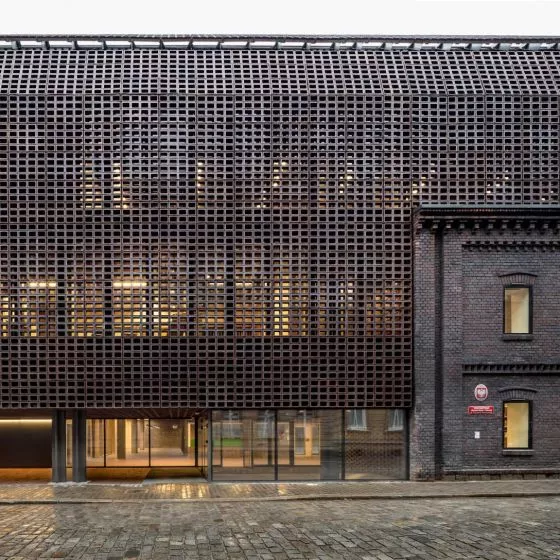Most susceptible to uncontrolled weather situations, prolonged periods of drought or flooding is access to resources from outside the city. Green spaces such as parks and squares should therefore act not only in terms of their recreational function, but also as food production areas. Green spaces can be treated functionally, and urban lawns and parks can be turned into a kind of plantation. Cities can be not only consumers, but also producers of food, especially if we consider all their inhabitants, not just people.
Urban Crop Management
Municipal institutions responsible for greenery maintenance should at least be as concerned with visual appeal as with the edibility of the plants planted in parks and squares. Changing the logic of their functioning from one focused on aesthetic qualities to a focus on the function of plants, treating them on the one hand as necessary infrastructure and not just a fad, and on the other as an integral part of the urban natural system would make it possible to dramatically affect the perception and use of urban green spaces. Ornamental shrubs can be turned into fruit bearing edibles, tall aesthetic grasses can be turned into crops, and orchards can be planted in parks. Of course, one would have to operate here with an effect of scale and adapt the cultures to the possibilities of the urban environment. It would also require constant tending and harvesting, which to some extent would replace today's widespread maintenance. Such an approach, however, is a lifesaver not only in situations of extreme scarcity for humans, but especially food for animals - more vulnerable to extreme weather events or multi-week droughts.
An urban farm in Chicago
Photo: Linda from Chicago, USA | Wikimedia Commons © CC BY 2.0
Local, neighborhood community gardens are a great idea, but they don't work on a scale larger than the backyard and benefit a small community. An institutionalized approach to the topic of cultivation on a city scale can make a measurable difference. One can imagine a situation in which part of the crop is directly harvested by the city, and to other beds, plots or orchards - the city grants access and gives in care to organized neighborhood communities, groups of friends, businesses. Institutional care in such a situation would ensure continuity of crops in case of changing "tenants" or adequate biodiversity and verification of quality, pollution levels, interventions in case of more serious infections or droughts.
Finally, a resource that does not directly affect humans, but has a significant impact on the city's climate and living space are wilderness areas - habitat for wild animals and plants. Therefore, it is important that not every green space in the city should be regulated and "parked." Areas of wasteland, marshland or meadows, even the location between housing estates, are just as important an element of urban infrastructure as parks.
collecting permitted
Located in western Germany, the town of Andernach has put the idea of an "edible city" into practice. The city motivates its citizens to help plant and maintain urban edible vegetation - fruits and vegetables that anyone can pick. By involving residents, they gain an awareness of nature's cycles, the natural rhythm of planting, growing and harvesting. The city is filled with nut trees - residents have walnuts, chestnuts and almonds available, but plants such as artichokes, potatoes, chard and green cabbage are also popular. Planting these edible plants helps ensure that everyone has access to healthy food that doesn't have to travel a long distance from the producer.
The crops are located in its very center along the historic city walls
© MUNICIPALITY OF ANDERNACH
The crops are not located outside the city, or in vast green spaces, but in its very center along the historic city walls. The city government has made the motto of Andernach the slogan "harvesting allowed".- The crops are overseen by the magistrate, but the shared green infrastructure can be used by anyone. Vegetables such as carrots, beans, fruits and berries, herbs and flowers are planted on public green spaces, resulting in a whole new vision of urban greenery. The range of plants planted also changes every year. Over the years, among others, 100 different species of tomatoes and beans, 20 varieties of onions or cabbages have been planted. Directly adjacent to the crops is also a small vineyard with different species of grapes.
not only on the surface
In Paris, an underground parking lot has been adapted for urban cultivation. La Caverne, which has been operating since 2018, is a farm offering certified organic farming products that are harvested and delivered to Parisians the same day. Located in an abandoned parking lot beneath a building inhabited by three hundred people, La Caverne offers 3,500 m² of crops. Annual production targets are 150 tons of radicchio (France's third favorite vegetable) and 40 tons of mushrooms - from mushrooms to shitake. The vegetables are mainly sold at a nearby market by a company that handles the farm. The young initiative employs 10 people, eight of whom are residents of nearby buildings.
The French capital, moreover, intends to develop urban agriculture on a much larger scale and in a systemic way. By the end of 2020, Paris is expected to have 100 hectares of roofs, facades and green walls, including a third dedicated to urban agriculture. The realization of La Caverne, in turn, was made possible by the Les Parisculteurs program, launched in 2016 and continued in subsequent years, which is the city's vehicle for supporting and funding urban agriculture initiatives.




























